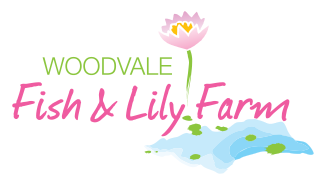What Fish to Grow
The most popular varieties for your back yard fish farm would have to be Silver Perch, Trout, Barramundi, Marron and Yabbies. The following information and advice is going to be based on the assumption that you have a 1,000lt tank, that has been set up with a correctly sized pump and filter, be it a aquaponics grow bed, a plant filter, a biological or under gravel filter and positioned to receive sun for most of the day, in a standard outdoor, back yard environment.
Marron and Yabbies
Let’s start with Marron and Yabbies, these are a great way to get children interested. To mimic nature as best as possible, we recommend a thick layer of fine river gravel on the base of the pond and invest in some hides.
Hides are a series of folded, course mesh, with a float on the top and a weight at the base, this means that your crustaceans re not confined to the base of the pond, it encourages natural behaviors as they can move up and down, using the entire column of water. They like to hide during the day, moving and feeding at night. To keep them from climbing out, and they will if they can, use ponds with straight, smooth sides or fit a fine mesh cover, ( best not to use shade cloth, it is too dense and limits air flow).
They will feed on water born insects and algae, to maximize growth, feed with small amounts sinking pellets. If you stocked between 20 and 30 babies you can expect them to reach a good size ready for the plate in 6-8months. With the right conditions, they will breed so keep an eye out for new babies. You can mix yabby and marron together, but often yabbies will out compete, they are considered to be more aggressive.
Silver Perch
Silver Perch are a great all year round choice, they are tolerant of most conditions offered by the back yard fish farmer. Silver Perch are a summer growing fish, with slow or no, growth over winter. If you started with 20 to 25 babies at 5-7cms, (1000lt pond and you will lose some) you can expect them to be plate size in two summers.
Large Silver Perch, as a rule don’t like moving home, so you will have more success starting small and being patient. You can mix sizes of Silver Perch, as they are not carnivorous, hopefully you can achieve a rolling population of fish of different sizes, harvesting the largest ones and replacing with smaller fish all the time throughout the year.
Trout
Trout are winter fish, thriving in the colder water, preferring 10-20 degrees. They are best described as fast growing, fast feeding, and fast living fish. You can expect a 10cm fingerling to reach a plate size over one normal winter, start with 15–20, they can and will jump out, so again a mesh covering will be helpful.
Trout are lots of fun to feed as they will aggressively attack floating fish food, but once any missed foods hits the bottom they won’t be interested, so be ready to scoop it out as it will quickly foul the water.
If your Silver Perch are over 15cm you can mix together, any smaller fish are likely to be preyed upon by the trout. Be ready to harvest as the water temperatures start to remain over 22degrees.
Barramundi
Barramundi are a summer growing fish, preferring water temperatures 22-35degrees; you really need to purchase fingerlings around the 10-15cm mark to ensure plate size over one summer. Similar to trout they are carnivores with a preference for live food. Considered by many as a more finicky fish and more difficult to keep happy, but the bragging rights are there for those that are successful.
Specific requirements for different varieties of fish
The well respected Aquaculturist of 25 years, Carey Nagle and I often have discussions about how to deliver helpful and important information to the average backyard fish farmer.
PH and Crushed Limestone
After reading my last article about PH, (PH levels will rise and fall over the course of the day and night, sunlight, fish, plants, fish food etc. all have a bearing on the PH levels, checking and trying to adjust the PH artificially is almost impossible) Carey came up with some valuable information when talking about PH and I have quoted him.
“Unless you are using bore water from a lime rich source the addition of crushed limestone is very important for the management of your water chemistry. It is the first thing you are taught in aquaculture when it comes to managing Ph and you can’t leave it out on any discussion on PH.”
So thanks for that Carey, crushed limestone is available at most good landscape supplies or your local fish supplier. The rates are 1kg per 1,000lt, if it dissolves immediately then add a little more, it will only dissolve until saturation point.
